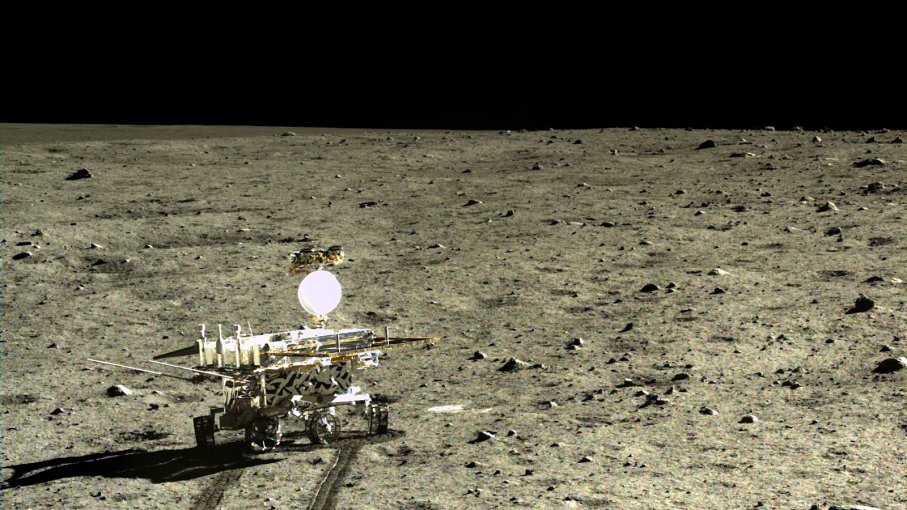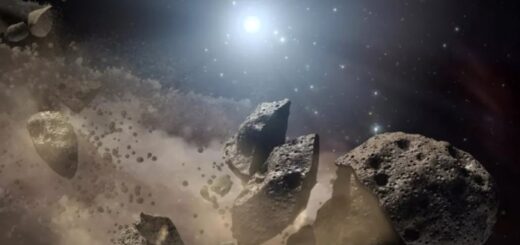Chinese Spacecraft Lands on the Far Side of the Moon

The lunar probe Chang’e-4 is the first manmade spacecraft to land successfully on the far side of the moon. CHINA NATIONAL SPACE ADMINISTRATION
You can only see one side of the moon from Earth’s surface, and things have been that way for around 4 billion years. But on Jan. 3, 2019, the world turned its collective attention to the other, more mysterious realm.
That’s because the Chinese lunar probe, Chang’e-4, became the first manmade spacecraft to land on the far side of the moon. For a country that’s now a major player in the global space community, this was a jubilant moment indeed.
Xinhua, a state-run news agency, reports that the China National Space Administration’s Chang’e-4 touched down on the moon’s surface at 10:26 a.m., Beijing time, on Jan. 3, 2019.
It landed inside the Von Kármán crater, a depressed area measuring 110 miles (186 kilometers) wide. This geological landmark resides within the South Pole-Aitken Basin, the biggest crater on the moon. Located over on the far side, it’s 1,150 miles (2,500 kilometers) in width and covers almost one quarter of Earth’s natural satellite.
The historic journey of Chang’e-4 began at around 2:23 a.m., Beijing Standard Time, on Dec. 8, 2018, when it took off from the Xichang Satellite Launch Center. It entered lunar orbit four days later.
Similar in design to the Chang’e-3 — which landed on the moon’s near side in 2013 — the probe consists of a 300-pound (136-kilogram) mobile rover and a 2,400-pound (1,088-kilogram) robotic lander.
Fitted with cameras, ground-penetrating radar and other tools, Chang’e-4 was designed to help scientists answer lingering questions about our moon’s geologic past. Of particular interest to biologists are the potato seeds, flowering plants, and silkworm eggs that Chang’e-4 took along for the ride. These will be experimented upon to see how lunar gravity affects growing life forms.
To communicate with researchers at the China National Space Administration, Chang’e-4 relays signals to Queqiao, a satellite that’s now circling above the moon’s far side in a halo orbit.
Regardless of what the probe ends up telling us, its legacy is secure. Though the far side of the moon has been photographed many times, landing a rover there is a feat that neither NASA nor any other space agency has ever pulled off.
“We … have done something the Americans have not dared try,” astronomer Zhu Meng-Hua told The New York Times. Meng-Hua is an assistant professor at the Macau University of Science and Technology in Taipa and studies craters and lunar geology (among other things). He believes this ambitious mission “shows that China has reached the advanced world-class level in deep space exploration.”
The China National Space Administration plans to launch another probe, the Chang’e-5, later in 2019. Its mission will be to obtain geological samples on the near side of the moon and send these back to Earth.



 Creators of mankind
Creators of mankind Description of “Tall white aliens”
Description of “Tall white aliens” Where they came from?
Where they came from? About hostile civilizations
About hostile civilizations The war for the Earth
The war for the Earth “Tall white aliens” about eternal life
“Tall white aliens” about eternal life Video: “Nordic aliens”
Video: “Nordic aliens” Aliens
Aliens Alien encounters
Alien encounters The aliens base
The aliens base UFO
UFO Technology UFO
Technology UFO Underground civilization
Underground civilization Ancient alien artifacts
Ancient alien artifacts Military and UFO
Military and UFO Mysteries and hypotheses
Mysteries and hypotheses Scientific facts
Scientific facts


















